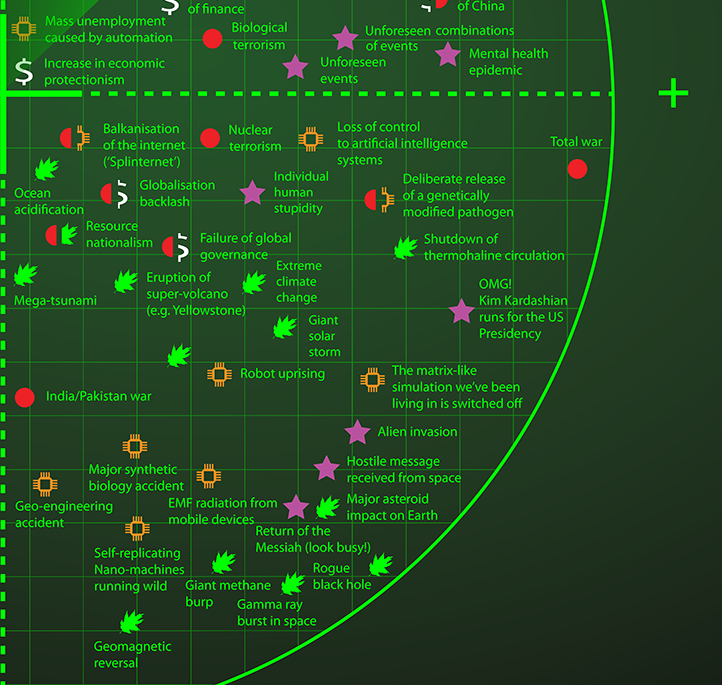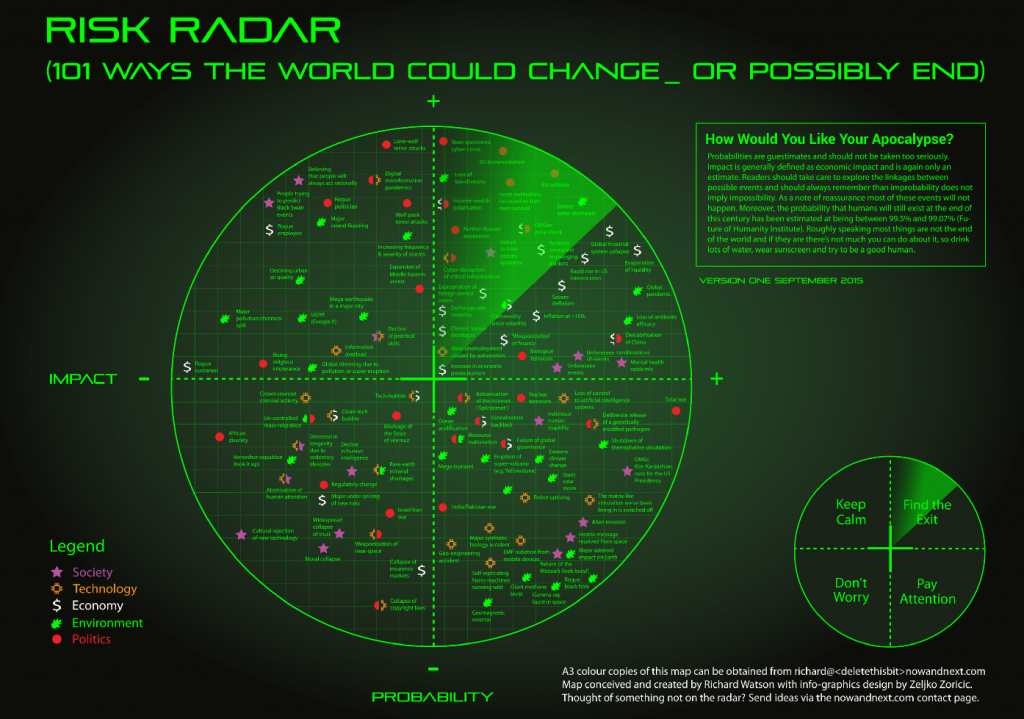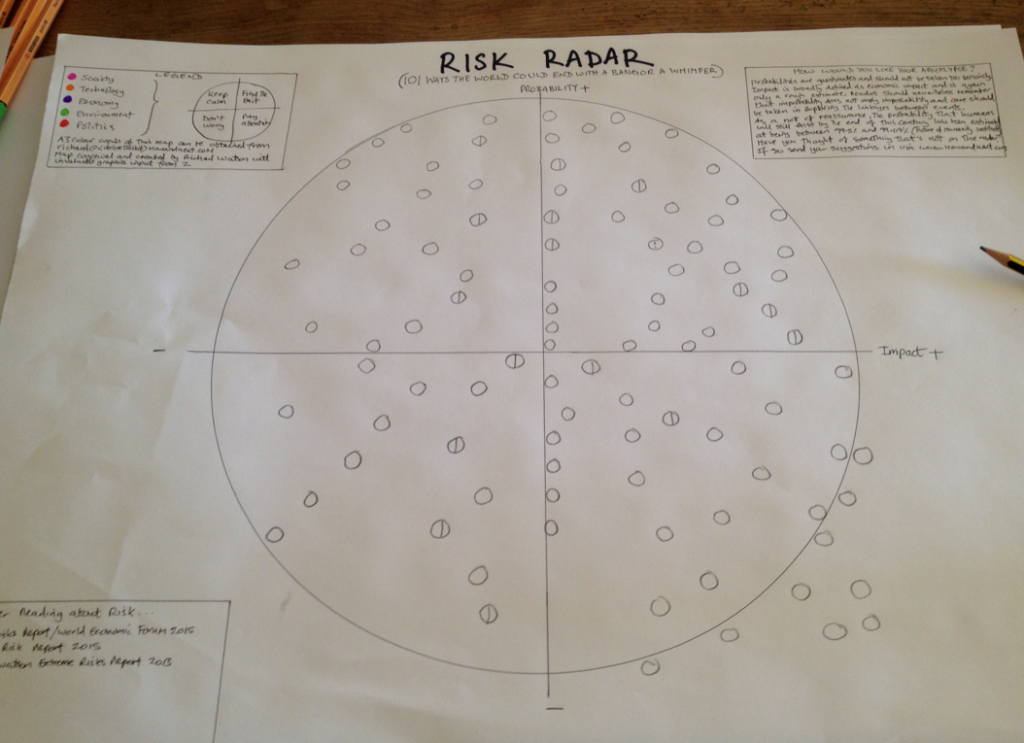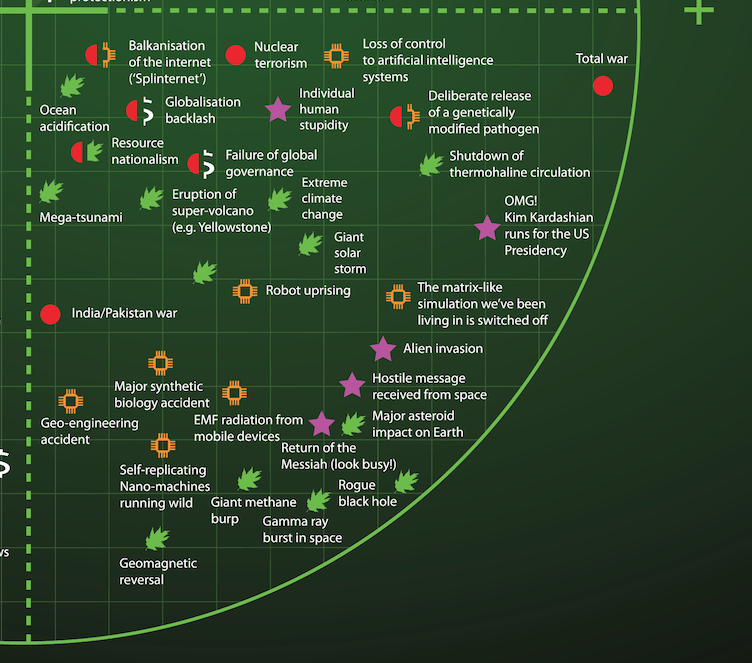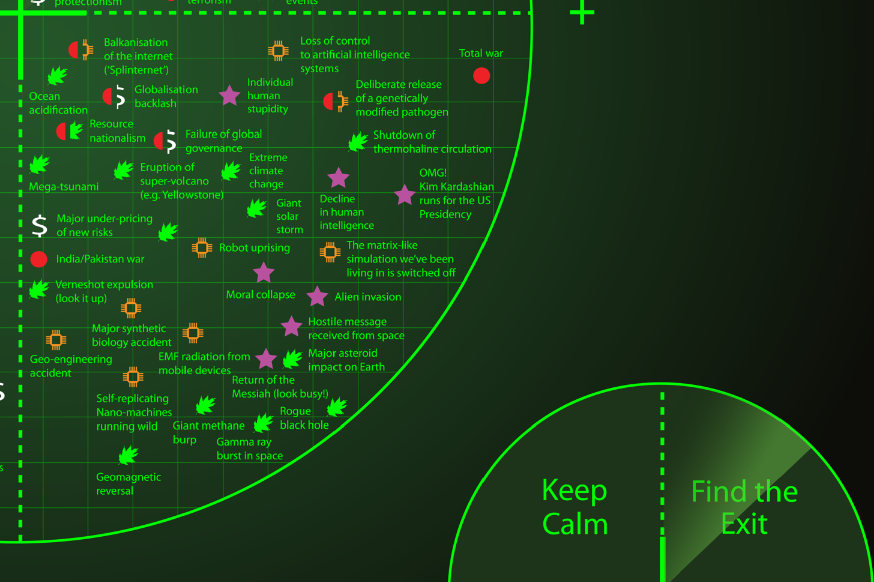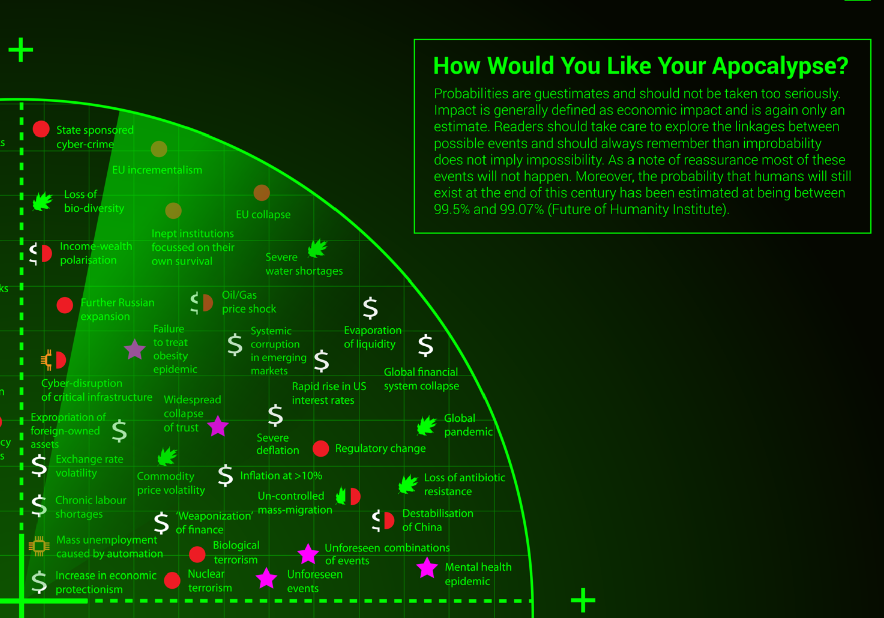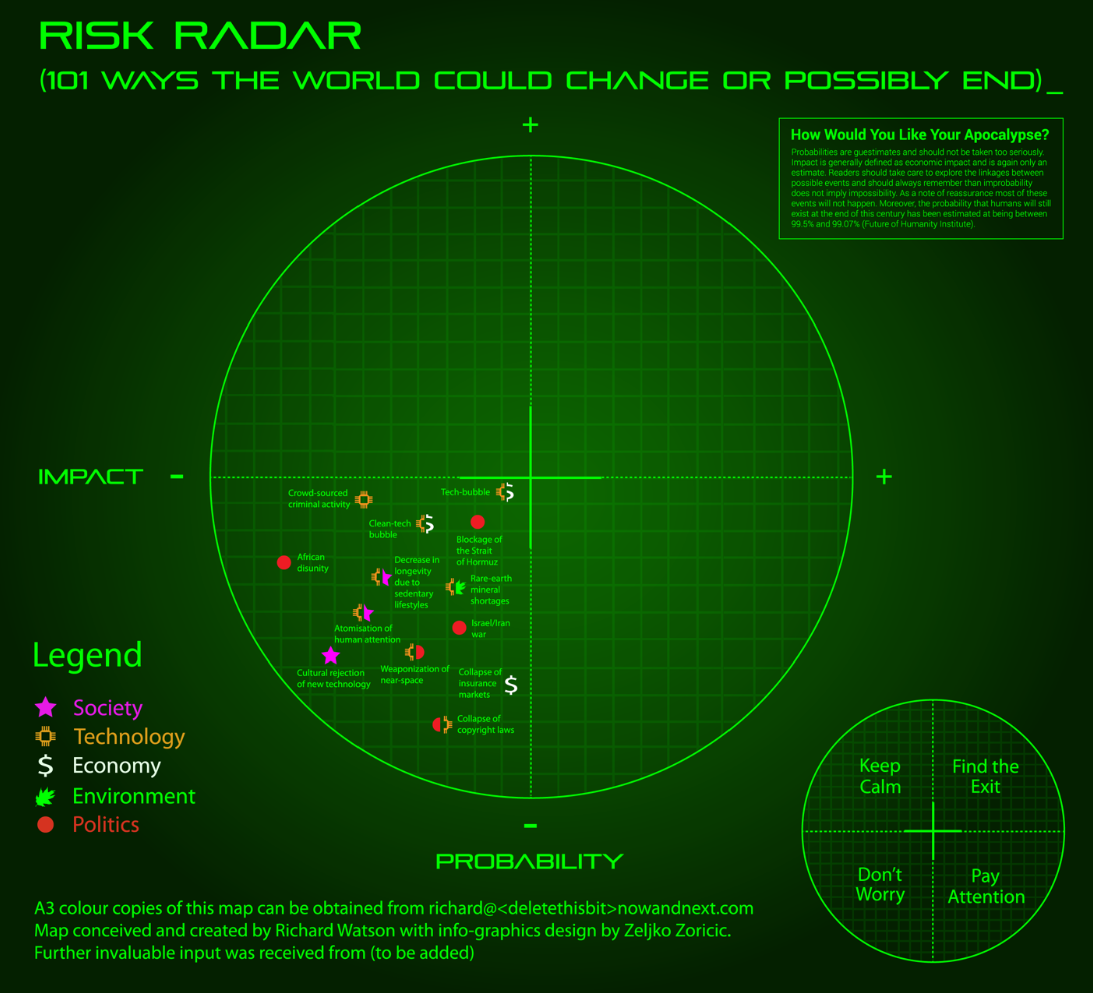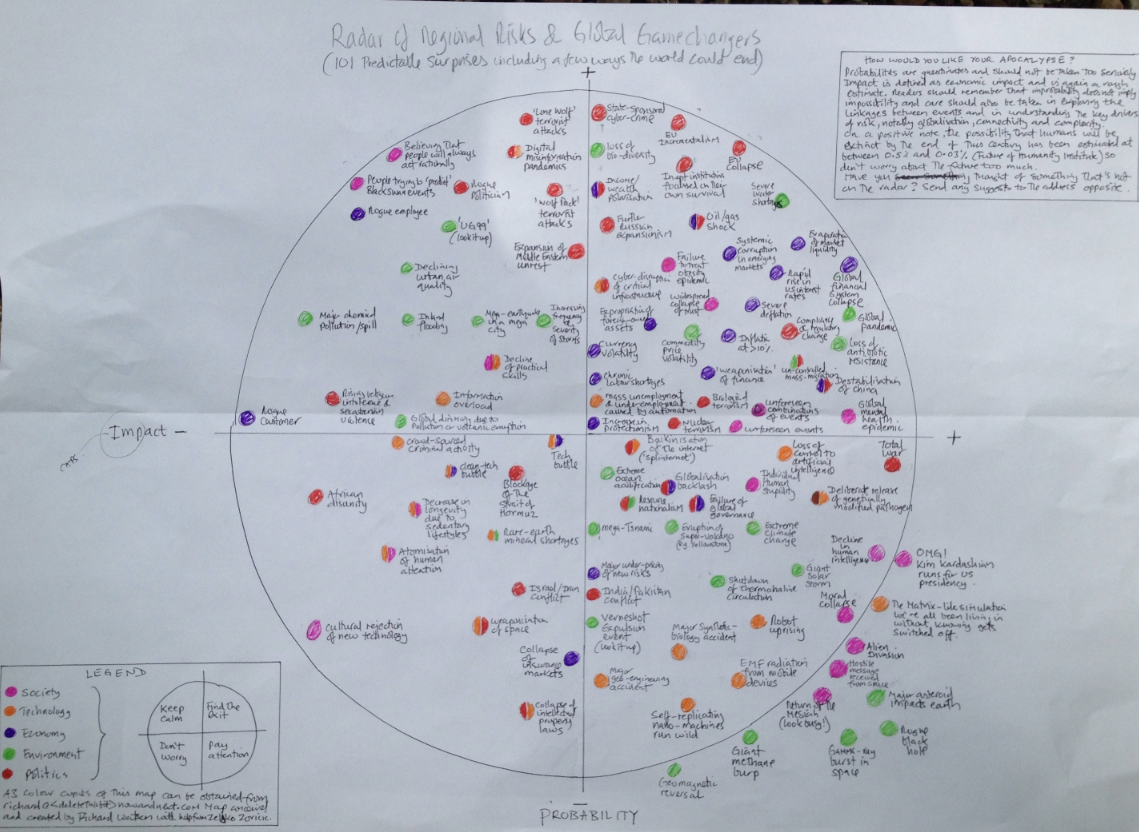Here’s a true story. A few weeks ago I decided to take one of my old cars for a run. It’s a very old car and if it isn’t run regularly things start to go wrong with it. It was the first dry day in weeks, although there was a heavy frost. The run was fine, although it wasn’t long enough so I decided to extend it. Long story short, I hit some black ice on a bend. I wasn’t travelling fast – 20mph perhaps – but I ended up on the wrong side of the road in front of a van coming directly at me at a similar speed. We missed each other, but I ended up in a hedge and did quite a bit of damage to my car.
Here’s an alternative scenario. My insurance company is well aware of the weather in my area. In fact they’ve been alerted by three local drivers that they’ve hit trouble. So when I open my garage, or possibly before, I receive a text saying that there have been three accidents in the area in the last few hours and it’s recommended that I don’t take the car out until any ice has melted. Maybe I’d get a tiny discount for not driving my car on this particular day.
In the future insurers will have a far better understanding of risk, much of it in near real-time, because of the devices we constantly carry around with us – phones especially – and due to ubiquitous smart sensors. Eventually there will trillions of these tiny sensors reporting on just about everything all of the time. The data these devices capture will be used to predict behaviour, which will be used to cluster pools of customers and aggregate risk, but also to personalise policies to single individuals and companies. Eventually these sensors will be mandatory in all vehicles and it will be impossible to get insurance cover without them.
The nature of this data will allow insurance companies to vastly reduce risk by warning customers to avoid certain situations, again in real time. This could be purely punitive, but more likely insurance companies will ‘game’ their customers to nudge them in various virtuous directions. Thus insurance companies will move from risk recovery to risk avoidance. This will further blur the distinction between real life and virtual life and insurance companies will cover virtual assets, information and identity as much as they cover physical assets.
Digitalisation will allow new pricing models and payment options too. For example, travel or life insurance will mostly be bought by the day – or even by the second – and the cost would be dynamic, responding instantly to changing context and variables. If it looks as though a tourist is straying into a risky part of town they might receive a text telling them so. Or perhaps their insurance company will notice that they’re away from home and ask for an increased premium or suggest that since they aren’t driving the family car for a while the reduced risk be transferred into cash-back or would result in a discounted travel policy.
If a customer is skiing and the weather looks nasty it would be possible to buy cover on the spot on a ski lift using a phone, but also to link to other skiers on the mountain to assess the risk locally and possibly cover it via the crowd. This might be ‘sold’ to users on the basis that it’s a little like online gambling.
An individual on the lift might also receive a text from Google saying that their latest weather data, together with known data about the individual’s left knee, would suggest that additional medical cover would be sensible if the individual is not wearing augmented reality ski goggles that display hidden hazards. Or maybe the text comes from the travel company, the ski-maker, the ski boot maker or the ski clothing company, all of which are connected to the internet. All companies, regardless of what they make, are now in the information business and offer added-value services direct to their customers.
Similarly, cars, even before they’re autonomous, will collect data on not only real-time driving conditions, but on the behaviour of the driver and other drivers in the vicinity. The telemetry and data analysis used by F1 teams now will eventually be available to everyone.
If a car noticed that a driver was driving erratically it could ask other connected devices for an explanation. The drivers bed might report that the driver had very little sleep the previous night so the car would automatically adjust its safety controls as a result. Insurance costs might be increased until the driver had a good nights sleep.
Of course we shouldn’t forget pets. These will be fitted with collars or embedded sensors that track physical activity and perhaps link to known food purchasing or consumption habits. This will allow for personalisation and the identification of overweight animals and owners.
Homes will be wired and intelligent too, with buildings automatically reporting on their condition and that of any significant object and appliance within. For example, inadequate heating would impact the cost of cover as this may in turn affect frozen pipe risks. Medical insurance would be much the same – constant real-time data reporting on the condition of insured individuals, perhaps with updates based upon daily exercise, food intake, pill consumption and any recent medical interventions. This would be augmented with genetic information about each individual. Any deviation from an agreed policy condition (a sneaky cigarette or too many jam donuts) would void cover, although good behaviour would open up a series of added value benefits and services – the use of certain hard to see NHS medical professionals or access to low-risk robotic surgeons. Expect Apple, Google and Vodafone to all be active in this area.
Most customer contact and pricing will be through mobile devices and this will itself see a high degree of automation with renewals simply requiring customers to press ‘9’ if they would like to renew a policy. Robotic insurance advisors and salespeople will also become commonplace.
How would all this be possible? Beyond the ubiquitous digital connection of individuals and objects, one very big change will be the disappearance of cash. All purchasing will be digital and will therefore record what is being bought, by whom, where and when. Once such modelling becoming precise it will be possible to offer customers cover across all risks with payment that’s constantly changing, much as a domestic utility bill is related to how much of a particular resource is used.
However, the ownership of all this data, much of it reporting on previously unseen, unobservable or private behaviours, will be extremely valuable and this is where the potential scenario breakers come in.
Firstly, whose data is this anyway? If the data is valuable individuals and institutions may demand full or partial payment beyond the payment in kind currently afforded by low-level personalisation.
Secondly, privacy. Will individuals and institutions be happy to let others see or share the data relating to their behaviour, especially when it becomes far more apparent how this data is being collected and how it’s being used and in some cases sold?
Third, security. Perhaps on-going problems relating to data hacking, identity theft or government surveillance will result in a significant move away from smart sensors and big data.

